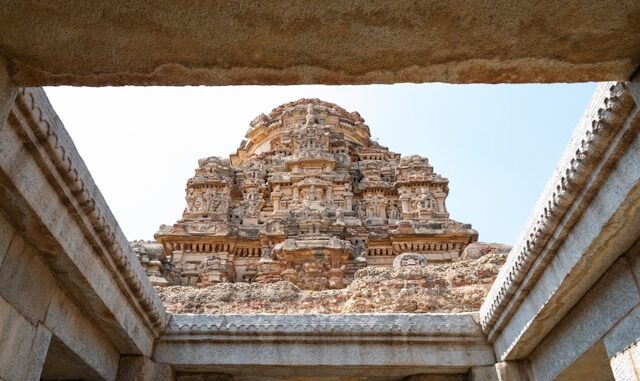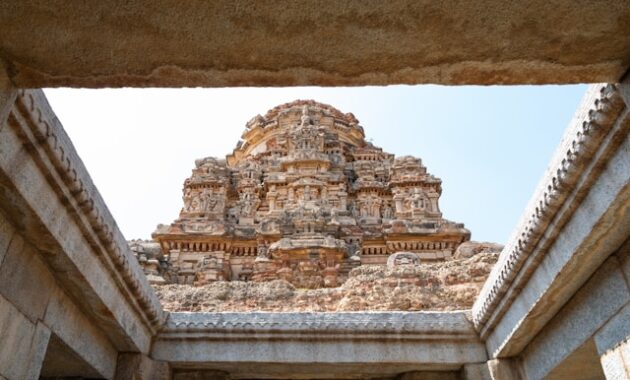
Nestled along the banks of the Tungabhadra River in the southern state of Karnataka, India, the ancient ruins of Hampi stand as a colossal reminder of a once-glorious civilization—the Vijayanagara Empire. Recognized as a UNESCO World Heritage Site, Hampi is a sprawling canvas of crumbling temples, majestic stone chariots, intricate carvings, and mythological legends. This cultural gem, with its mystical landscape and awe-inspiring architecture, continues to captivate historians, travelers, and spiritual seekers from around the globe.
The Rise of the Vijayanagara Empire
The Vijayanagara Empire was founded in 1336 CE by Harihara I and Bukka Raya I of the Sangama dynasty. Their vision was to create a formidable Hindu kingdom in response to the invasions from northern sultanates. Over the next two centuries, Vijayanagara grew into one of the largest and richest empires in Indian history, with Hampi as its glittering capital.
At its zenith under the rule of Krishnadevaraya, the empire rivaled Rome and Beijing in scale and sophistication. With a booming economy fueled by trade in diamonds, spices, textiles, and horses, Hampi became a cosmopolitan hub of art, religion, and commerce.
Architectural Marvels That Define Hampi
Virupaksha Temple – The Spiritual Heart of Hampi
At the epicenter of Hampi’s sacred geography lies the Virupaksha Temple, one of the oldest functioning temples in India, dedicated to Lord Shiva. The towering gopuram (gateway tower) rises over 50 meters, greeting pilgrims and tourists alike. This temple has witnessed uninterrupted worship for over a millennium, making it a beacon of enduring faith and resilience.
Vittala Temple and the Iconic Stone Chariot

Perhaps the most photographed monument in Hampi, the Vittala Temple Complex is renowned for its stone chariot—a symbol of Karnataka tourism. The intricately carved wheels, believed to be once movable, stand testimony to the craftsmanship of Vijayanagara artisans. Adjacent to the chariot lies the Musical Pillars, which emit distinct musical notes when tapped gently, reflecting the empire’s harmonious fusion of art and science.
Hazara Rama Temple – A Chronicle in Stone
Dedicated to Lord Rama, the Hazara Rama Temple is adorned with thousands of exquisite bas-reliefs that narrate episodes from the Ramayana. This temple, once reserved for royal family worship, serves as a historical manuscript etched in granite, portraying scenes of divine valor, courtly processions, and everyday life in Vijayanagara.
Lotus Mahal and Zenana Enclosure
The Lotus Mahal, with its Islamic arches and Indo-Dravidian aesthetics, was the royal residence of the queens. Set within the Zenana Enclosure, it speaks of the elevated status and refined lifestyle of women in the imperial court. The elephant stables nearby, each with a domed chamber, exhibit architectural brilliance tailored to housing royal elephants in grandeur.
A City of Trade, Culture, and Spirituality
Hampi was not merely a political capital; it was a cultural crucible where artists, poets, architects, and traders converged. The Hampi Bazaar, stretching over a kilometer, once bustled with merchants from Persia, Portugal, and Arabia, dealing in gems, spices, and textiles. The city’s coin minting and advanced water management systems, including aqueducts, tanks, and canals, revealed remarkable urban planning and engineering prowess.
Mythology Interwoven with Stone
Myths and legends from the Ramayana and Mahabharata are deeply embedded in Hampi’s identity. It is believed to be Kishkindha, the monkey kingdom ruled by Sugriva, an ally of Lord Rama. The Anjanadri Hill, said to be the birthplace of Lord Hanuman, remains a sacred pilgrimage site. These narratives, etched in local lore and temple murals, infuse Hampi with a timeless spiritual aura.
Fall of a Glorious Empire
The Battle of Talikota in 1565 marked a tragic turning point for Hampi. The combined forces of the Deccan Sultanates dealt a crushing blow to the Vijayanagara army, leading to the ransacking and near-total destruction of the city. Palaces were reduced to rubble, marketplaces looted, and the capital was abandoned, leaving behind a hauntingly beautiful ghost town of carved stones and silent temples.
Modern Rediscovery and Preservation
Hampi remained forgotten for centuries until British archaeologists and Indian historians revived global interest in its significance. Today, ongoing excavation, conservation efforts, and sustainable tourism initiatives have helped preserve the site’s legacy. With a perfect blend of history, mythology, and natural beauty, Hampi draws thousands of visitors annually and continues to serve as a window into India’s glorious past.
Tips for Visiting Hampi
- Best Time to Visit: October to February, when the climate is pleasant.
- Getting There: Nearest railway station is Hospet; regular buses and taxis connect Hampi to major Karnataka cities.
- Stay Options: Heritage resorts, guesthouses, and eco-lodges provide a range of accommodations.
- Guided Tours: Opt for certified guides or audio tours for deeper insights into Hampi’s stories and structures.
Conclusion: A Living Monument to Indian Heritage
Hampi is not just a destination; it is an experience of India’s rich architectural and spiritual lineage. The echoes of temple bells, the grandeur of stone architecture, and the serenity of the Tungabhadra River combine to create a mesmerizing journey through time. As one walks through its ruins, every stone whispers the tales of a civilization that once dared to dream, to build, and to transcend.